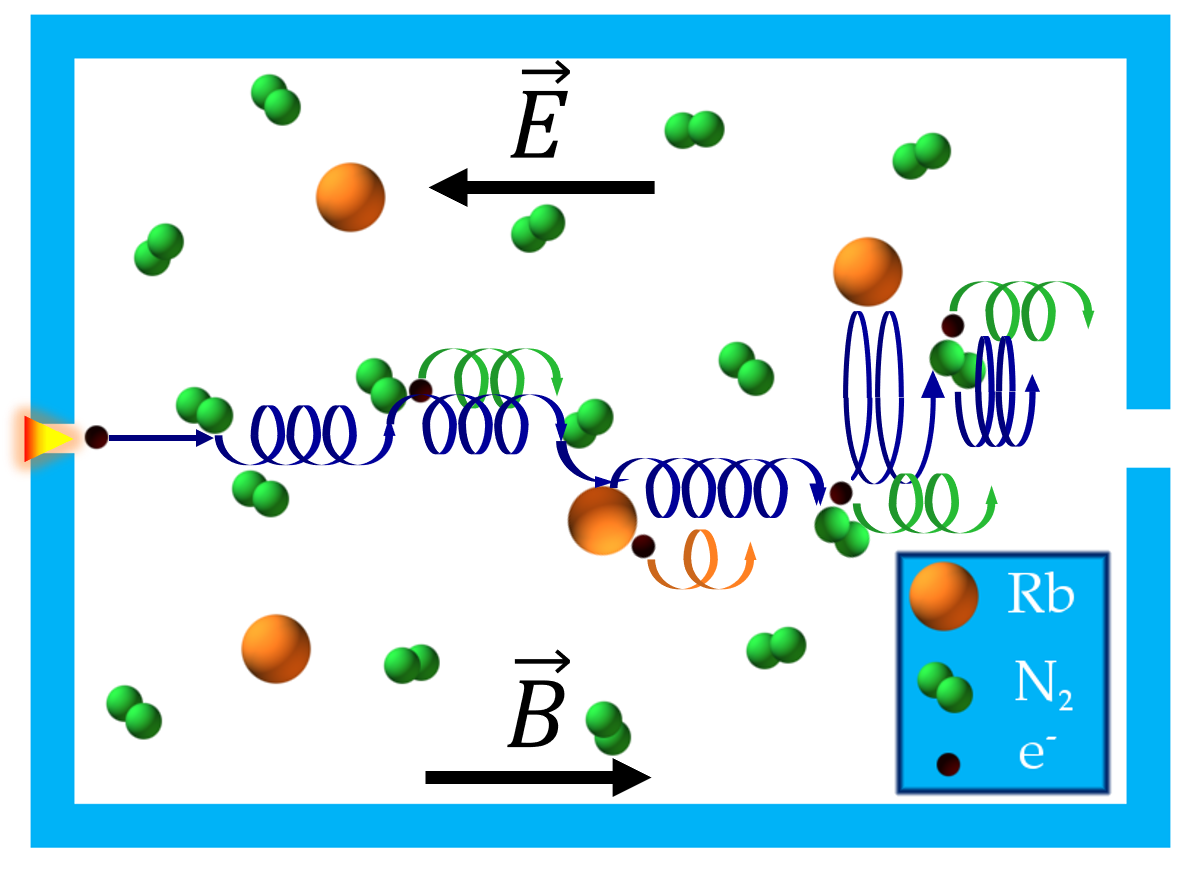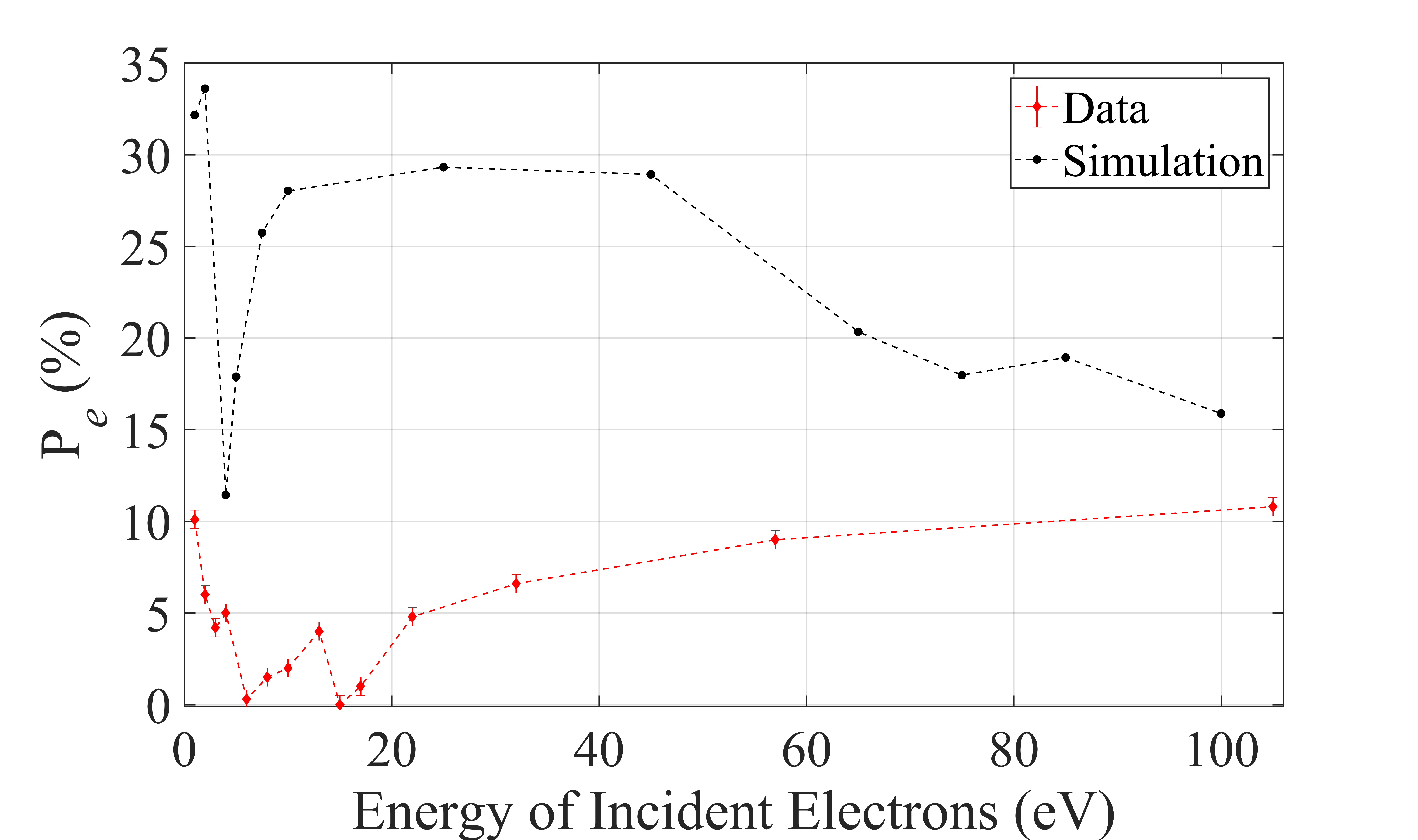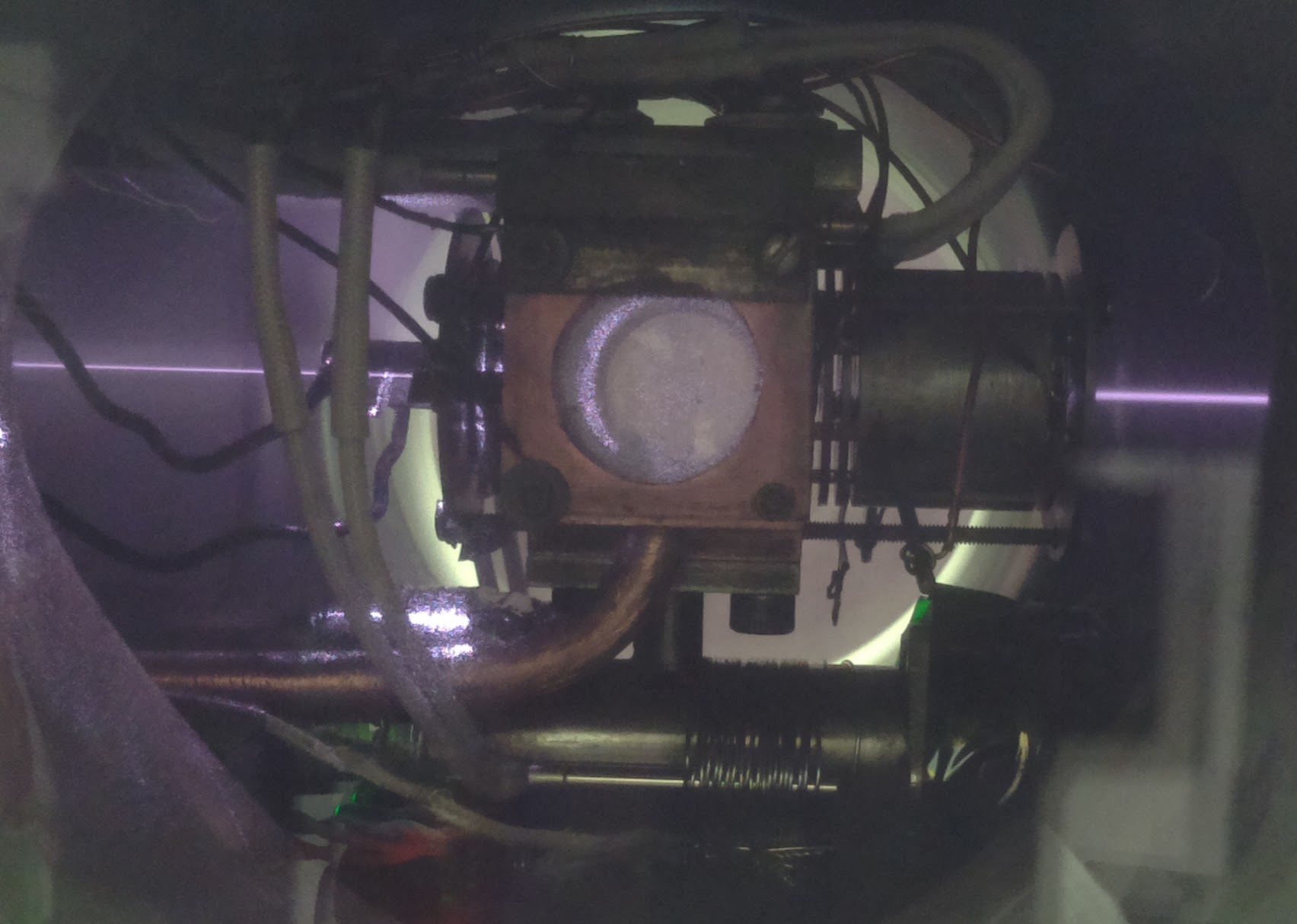Projects
The Rubidium Electron Spin Filter
|
The Rubidium Spin Filter has the following principle of operation: One can obtain a beam of spin-polarized electrons through interactions with the electrons from a vapor of spin polarized gas. We polarize a cell of Rb vapor with a 795 nm laser, send an unpolarized beam of electrons through the vapor, and through spin-exchange interactions, should obtain a spin-polarized beam of electrons from the exit end of the cell. The goal of this apparatus is to provide a turn-key source of spin-polarized electrons that can operate in the HV range of fractions of mTorr. The initial development of the apparatus led to some unexpected results. Current work on the source has been focused on building a better understanding of the physics behind how the spin polarized electrons are produced. Will Brunner has worked extensively on developing a Monte Carlo computer simulation of the apparatus. Despite putting our best knowledge of the collision dynamics into the simulation, the simulation fails to recreate the experimental results. This indicates that there are physics which we don't fully understand which are essential to the behavior of the apparatus. Planning is also underway to conduct the next iteration in our group's search for Electron Circular Dichroism (ECD) by passing spin polarized electrons through chiral molecules and looking for an asymmetry in the transmission of the electrons. 


|
|
Publications
Participants:
|
Explore MorePapers
Posters
|
